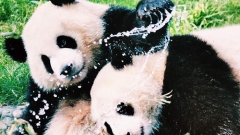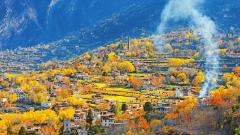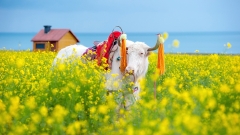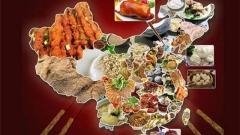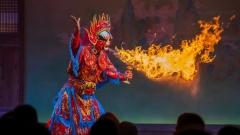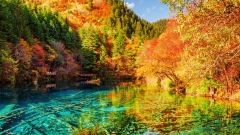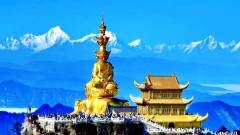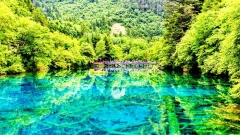Winter in Sichuan is a season full of contrasts. From the misty streets of Chengdu to the snow-covered peaks of Mount Emei and Daocheng Yading, the province offers a remarkable variety of landscapes and experiences between December and February. While some regions are mild and perfect for hotpot feasts, others turn into icy wonderlands ideal for photography and adventure. This guide explores what to expect each month during Sichuan’s winter — including weather, top destinations, and travel tips — to help you plan your perfect cold-season journey.
Sichuan in December: Early Winter Charm
Weather Overview
December marks the start of winter across Sichuan. The climate differs greatly by region:
-
Chengdu Plain: 3°C to 12°C, often cloudy and foggy.
-
Western Sichuan Plateau (Kangding, Daocheng): -10°C to 5°C, dry with occasional snow.
-
Southern Sichuan (Leshan, Yibin): Slightly warmer, 5°C to 15°C.
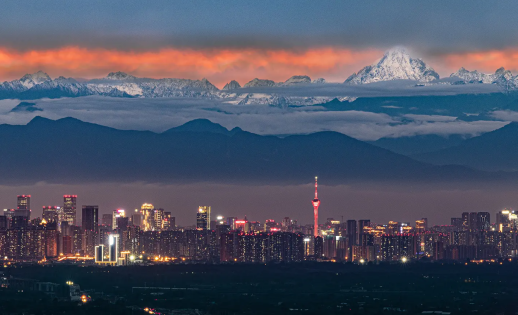
chengdu
There’s little snow in the basin areas, but the air feels damp and cool. It’s best to pack layers, especially if you plan to explore both the city and mountains.
Where to Go in December
-
Chengdu: Enjoy the cozy side of the city — sip tea in People’s Park, eat spicy hotpot, and visit the Chengdu Research Base of Giant Panda Breeding. Pandas are especially active in the cold.
-
Mount Emei: Snow begins to fall at higher elevations. The Golden Summit is often blanketed in white, with spectacular “sea of clouds” views.
-
Leshan Giant Buddha: Open year-round. Fewer tourists in December make it perfect for peaceful sightseeing.
-
Hailuogou Glacier Park: December is prime time to see frozen waterfalls and enjoy natural hot springs beneath snow-covered forests.
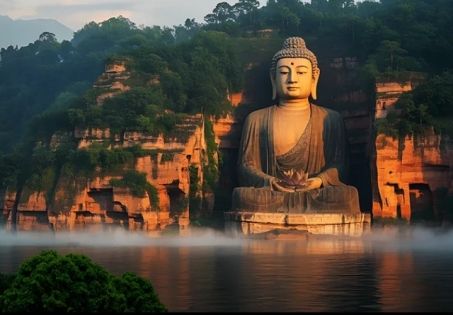
Leshan Giant Buddha
Travel Tips for December
-
Wear waterproof shoes and bring a warm jacket; Chengdu’s damp cold can feel sharper than it looks.
-
Avoid long-distance mountain drives at night — fog is common.
-
Great time for hotpot, spicy noodles, and Sichuan snacks to keep warm.
Sichuan in January: Deep Winter and Pure Scenery
Weather Overview
January is the coldest month in Sichuan. The skies over Chengdu are often gray, but air quality improves after rainfall.
-
Chengdu: 2°C to 10°C.
-
Mount Emei & Kangding: -12°C to 3°C, with thick snow.
-
Daocheng Yading: -20°C at night — breathtaking but extreme.
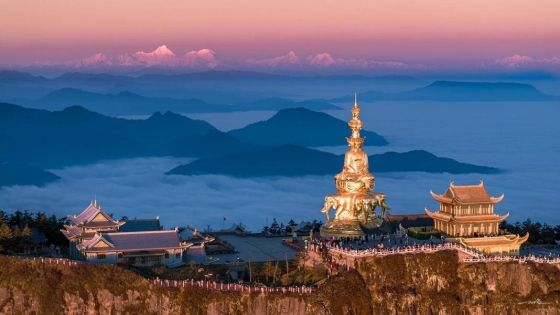
Mount Emei Golden Summit
Despite the cold, January rewards travelers with some of the clearest mountain views of the year.
Where to Go in January
-
Xiling Snow Mountain: Sichuan’s most popular ski resort, just 2 hours from Chengdu. It offers skiing, snow tubing, and cable cars to the snowy peaks.
-
Kangding and Mugecuo Lake: Frozen lakes surrounded by snow-covered forests; a paradise for photographers.
-
Jiuzhaigou Valley: If reopened (it often is partially open in winter), the colorful lakes contrast beautifully with snow and ice — a fairytale scene.
-
Chengdu Hot Springs (Dayi or Huaqing): The best way to unwind after a cold day.
Festivals and Events
Tibetan New Year (Losar): Usually falls in late January or February in Tibetan areas like Kangding or Litang. It’s a cultural highlight with prayer rituals, dancing, and yak butter lamps.
Travel Tips for January
-
Carry thermal wear, gloves, and a hat — mornings and evenings are freezing.
-
If traveling to high-altitude areas, prepare for altitude sickness and bring oxygen or medicine.
-
Some remote roads (like those to Daocheng or Seda) may close temporarily due to snow — check conditions in advance.
Sichuan in February: Winter’s End and Festive Vibes
Weather Overview
February is slightly warmer, though the nights remain cold. The air becomes clearer, and the first hints of spring appear in the south.
-
Chengdu: 5°C to 14°C.
-
Mount Emei: -8°C to 5°C.
-
Nyingchi Border (Western Sichuan): Still below freezing at night but sunny during the day.
Where to Go in February
-
Chengdu: February marks Spring Festival (Chinese New Year), when the whole city glows with red lanterns, temple fairs, and fireworks. Streets are lively, and teahouses brim with families celebrating.
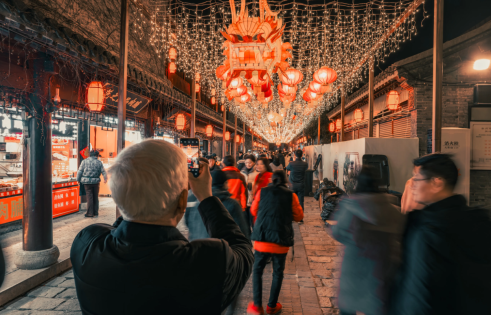
Chinese New Year
-
Leshan and Mount Emei: The snow begins to melt, creating misty, dreamlike scenery.
-
Kangding and Tagong Grassland: Still covered in frost, but clear skies make for magnificent Himalayan views.
-
Renshou and Meishan: Early blooming of rapeseed flowers begins toward late February — perfect for photographers.
Cultural Highlights
-
Lantern Festival: Held on the 15th day of the lunar New Year. Chengdu’s temples and parks host night fairs with lantern displays, folk performances, and street food stalls.
-
Tibetan New Year: In western Sichuan’s Tibetan areas, celebrations may continue through early February, offering a rare cultural immersion for respectful travelers.
Travel Tips for February
-
Public transportation may be crowded around Chinese New Year, so plan tickets early.
-
Great month for combining cultural and scenic travel — from Chengdu’s festive energy to the quiet snowscapes of western Sichuan.
-
Bring both winter and spring clothes if visiting multiple altitudes.
Packing Essentials for Winter in Sichuan
-
Clothing: Layered outfits — thermal base, fleece or sweater, windproof jacket.
-
Footwear: Non-slip, insulated shoes for mountain areas.
-
Accessories: Sunglasses (glare from snow), sunscreen, lip balm.
-
Medicine: For altitude sickness (if visiting western Sichuan), cold medicine, and hydration salts.
-
Electronics: Extra batteries — cold weather drains them faster.
Best Winter Itineraries
1. Chengdu & Mount Emei 5-Day Trip
-
Chengdu → Leshan → Mount Emei → Return to Chengdu
Perfect for those seeking temples, pandas, and mild adventure.
2. Western Sichuan Photography Tour (7 Days)
-
Chengdu → Kangding → Tagong → Mugecuo → Xinduqiao → Return
Ideal for winter landscapes and Tibetan culture.
3. Jiuzhaigou Winter Wonderland (6 Days)
-
Chengdu → Mianyang → Jiuzhaigou → Huanglong → Return
Recommended for nature lovers — less crowded and full of frozen beauty.
Why Visit Sichuan in Winter?
-
Fewer Tourists: Major scenic spots like Jiuzhaigou and Mount Emei are quieter and more affordable.
-
Spectacular Landscapes: Snow-covered peaks, frozen waterfalls, and misty valleys.
-
Affordable Travel: Flights and hotels are 20–40% cheaper than in summer.
-
Cultural Richness: Tibetan festivals, Spring Festival, and traditional temple fairs all take place in winter.
-
Hotpot Season: Winter is the best time to experience Sichuan’s iconic cuisine — warm, spicy, and communal.
Conclusion
Winter in Sichuan — from December through February — offers a mix of serenity, snow, and celebration. Whether you’re sipping tea in a Chengdu courtyard, skiing at Xiling, or watching prayer flags flutter over a frozen lake, you’ll find that Sichuan’s diversity shines brightest in its quietest season. With proper preparation and local guidance, a winter journey through Sichuan reveals a side of China that few tourists ever see.



